An Iconic Frank Lloyd Wright Theater Reopens Following a $1.1 Million Restoration Project
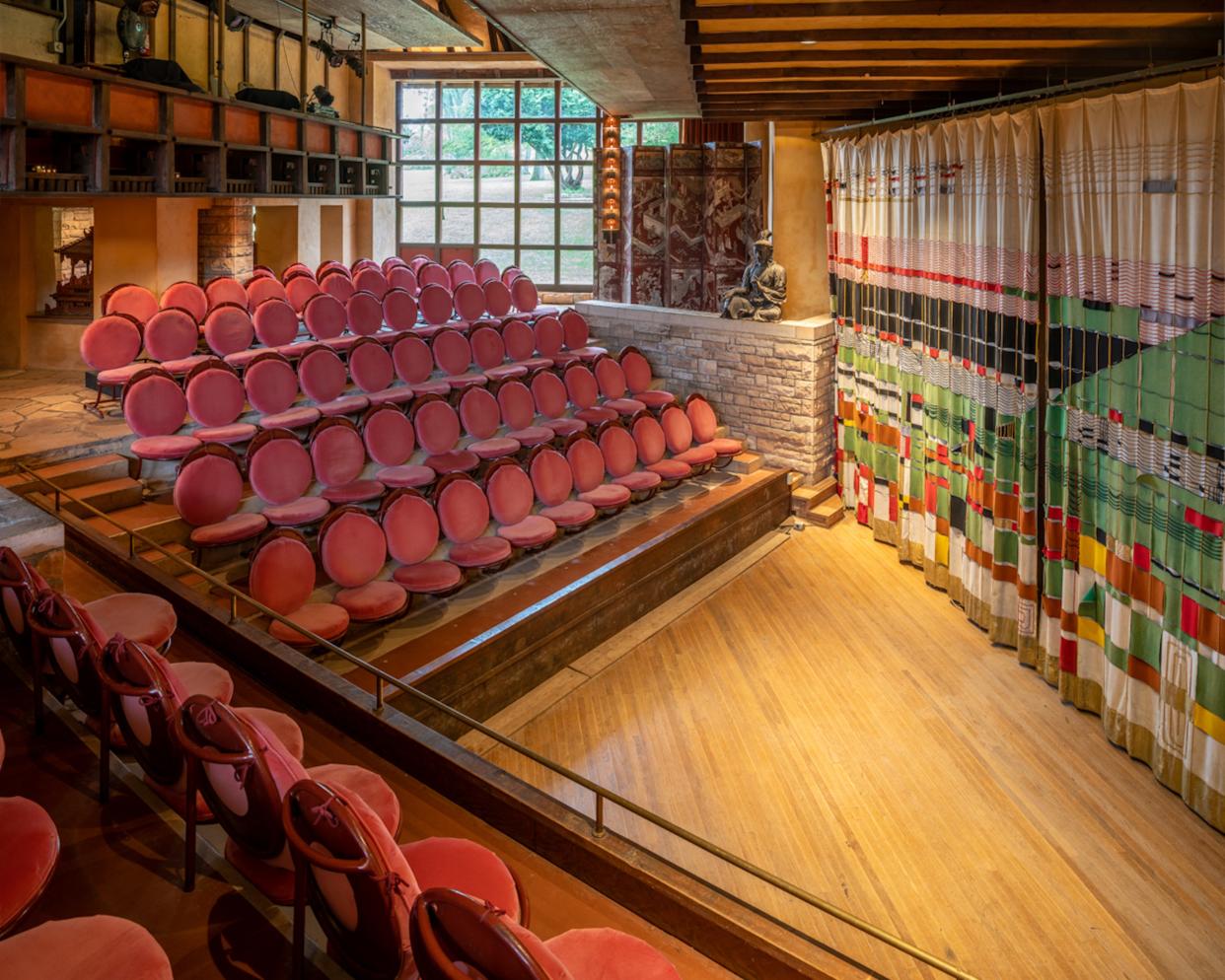
Photo: Tim Long courtesy of Taliesin Preservation
A lively crowd of midcentury-modern architecture lovers gathered at Frank Lloyd Wright’s Taliesin in the early afternoon on June 8, the architect’s 157th birthday. The celebrations weren’t just to blow candles and eat cake in honor of the legendary designer, but rather to commemorate the reopening of Wright’s Hillside Theater at Taliesin following a five-year, $1.1 million restoration project. “We’re very happy to present this space to you today,” Ryan Hewson, director of preservation at Taliesin for the Frank Lloyd Wright Foundation, said in a speech at the theater’s reopening. “The need for this project has been steadily more urgent as the space continued to physically deteriorate.”
The performance venue is located within the Hillside building on the Taliesin grounds, Wright’s estate in Spring Green, Wisconsin, which encompassed his private residence, architectural studio, and Taliesin Fellowship—an apprentice program that drew hundreds of architects in its peak—among other facilities. (He also had Taliesin West in Scottsdale, Arizona, which served a similar purpose and was used in the winter.) The architect acquired Hillside in 1922 after the Hillside Home School, which was run by Wright’s aunts, closed. The building was one of his earlier commissions, and once he owned it, he incorporated it into the Taliesin Fellowship complex, reimagining it over the years to include a drafting studio, apprentice dorms, a large dining room, and the Hillside Theater.
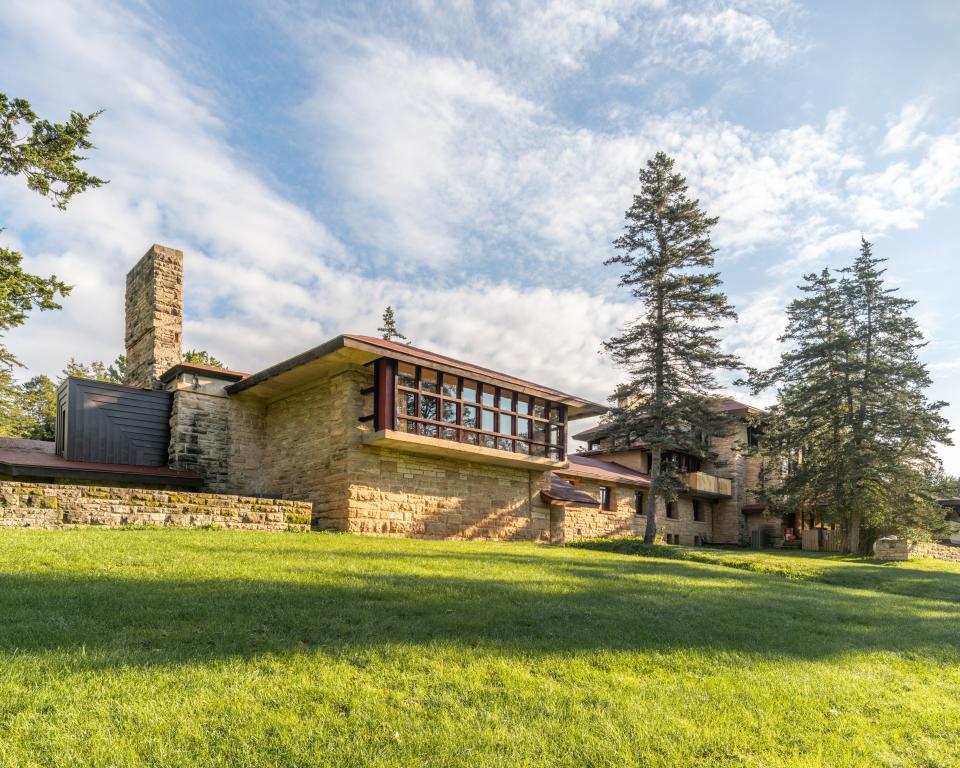
In Wright’s days, the venue would host weekly public movie screenings for 50 cents a ticket as well as concerts and other cultural events. However, the years were not as friendly to the theater as it had been to the Spring Green community. The venue suffered from structural and functional challenges, largely born from construction techniques that were common in the early 1900s, but no longer sound. “The project started with improving and installing adequate site drainage,” Hewson tells AD. Water that had infiltrated the building and damaged the stage was among the most severe threats to the site. “The stage had far more water damage than we realized when we started the project,” Hewson adds. “We first took it apart, and then reconstructed it.” Other improvements included new roofing, relaying paving, and updating plumbing and electric systems.
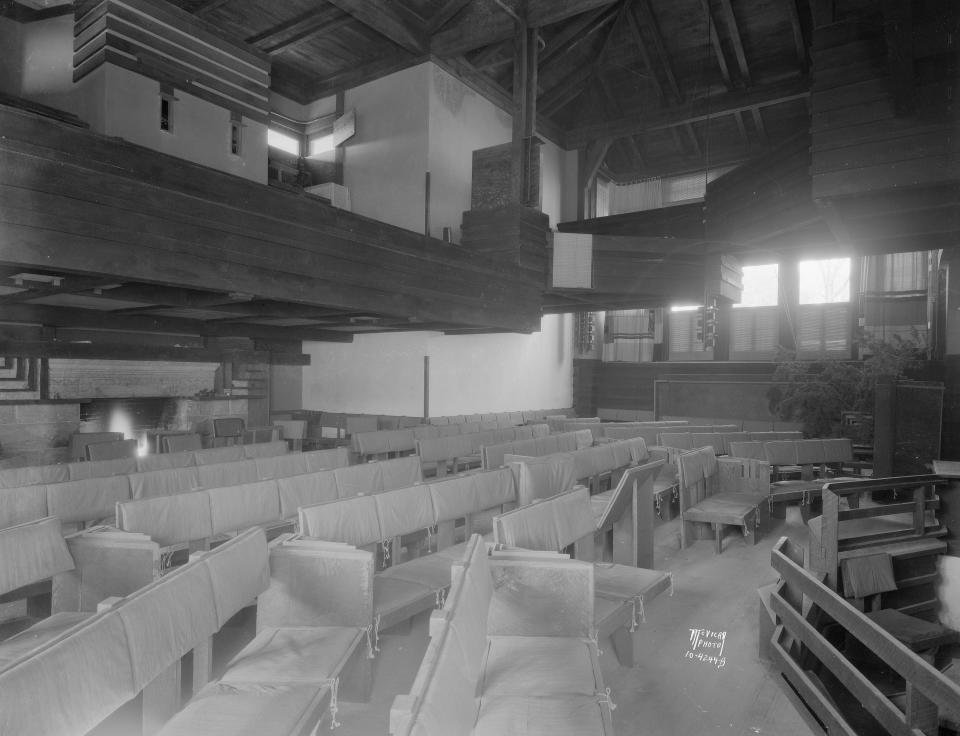
Taliesin Hillside Theater
Like much of the work by the Frank Lloyd Wright Foundation and Taliesin Preservation (the two organizations that spearheaded the project), restoring the theater was not just about reviving it to its former glory, but ensuring that its functionality stays intact for generations to come. To that end, the preservation team also made many accessibility improvements including an ADA-compliant bathroom and pathway into the venue. Furthermore, the team added two greenrooms, a bathroom, and storage and control room in the basement, which not only make the venue more useful, but were also part of structural improvements to the space. “We essentially built a building inside of a building,” Hewson explained of this area in his opening remarks. “Slightly easier than building a ship in a bottle.”
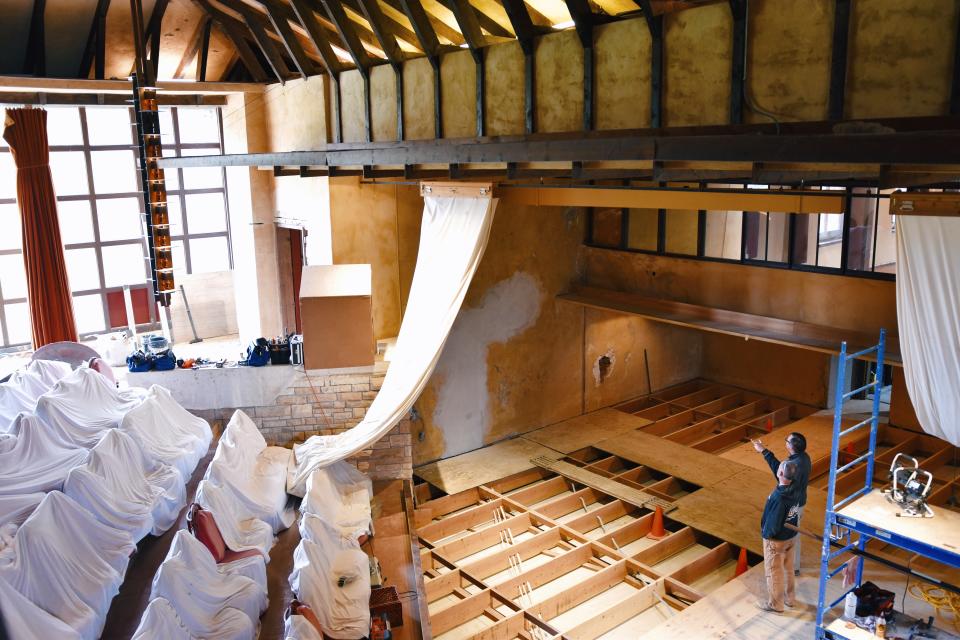
Chicago-based Third Coast Percussion, a Grammy-winning quartet, inaugurated the restored venue with a spirited performance, which was broadcasted live to viewers across the country thanks to a newly installed multi-camera streaming system. “It was incredible to hear the way the music filled the space,” says Stuart Graff, president and CEO of the Frank Lloyd Wright Foundation. Audience members were also able to catch a glimpse at the restored Hillside Theater curtain, a gift from Taliesin apprentices to Wright on his 89th birthday. According to the Foundation, it was the largest gift the architect had ever received, though he likely knew it was coming since he’d drawn the abstract design himself.
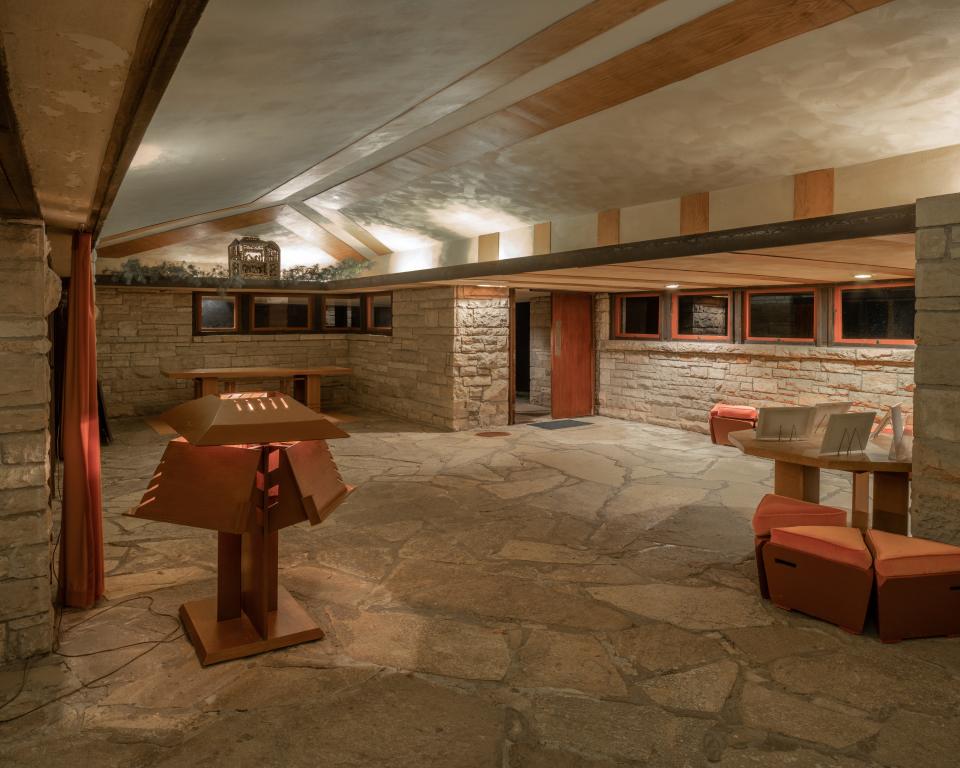
“It’s a challenging curtain, because it’s basically cotton with felt and yarn appliquéd onto it,” Kyle Dockery, the collections coordinator at the Frank Lloyd Wright Foundation, says. “The pieces are meant to move with the curtain, which gives it a beautiful dynamic quality, but they’re just attached at the corners.” While the partition has been restored a number of times throughout the years—most extensively in 2006 when it was displayed at both the Guggenheim in New York and Bilbao as part of the exhibition Frank Lloyd Wright: From Within Outward—the newest restoration largely focused on the gold lamé at the bottom. “It had dragged onto the floor and caught onto things over the years, so we retained all of the original material and encapsulated it within new gold lamé,” Dockery adds.
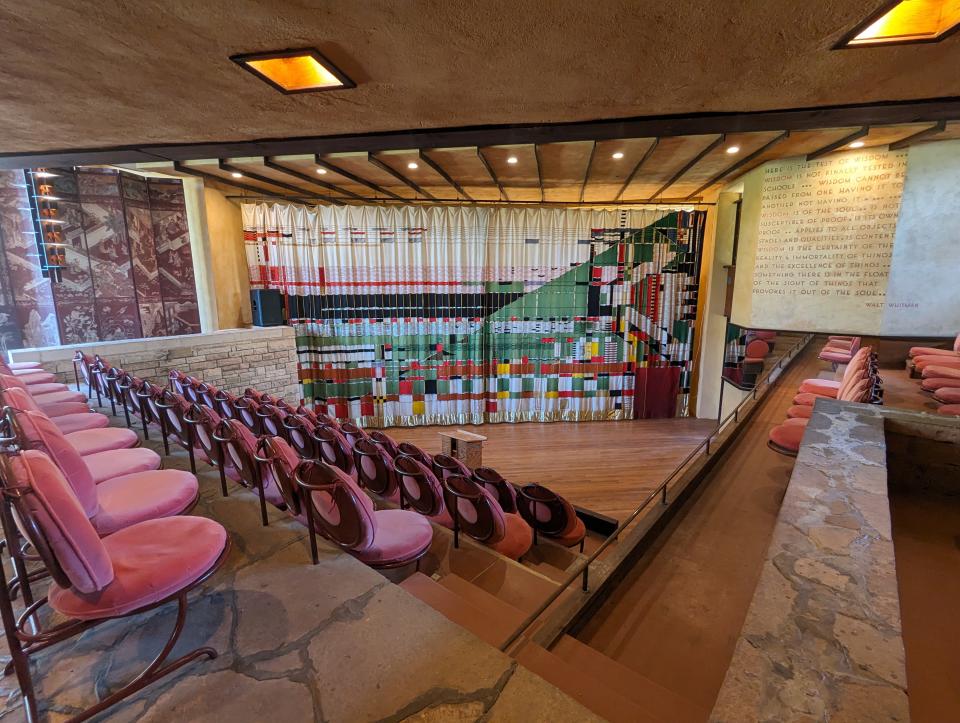
The entire restoration project, which began in 2019, was funded in part by grants from the National Park Service Save America’s Treasures program, the National Endowment for the Arts, the National Trust for Historic Preservation, the E. Rhodes and Leona B. Carpenter Foundation, and support from private donors and corporate partners. Moving forward, the Foundation plans to use the theater in the same way Wright did: as a point of connection with the larger community.
“Reopening the Hillside Theater is more than just a preservation milestone; it’s about reinvigorating a cornerstone of our cultural heritage and providing an immediate benefit—in the form of a newly restored theater—for our neighboring communities and visitors to the region,” Graff said in a statement. As Hewson adds, “The possibilities for the space now are pretty endless; there’s a lot of really great ones.”
Originally Appeared on Architectural Digest
More Great Stories From AD
The Story Behind the Many Ghost Towns of Abandoned Mansions Across China
Inside Emily Blunt and John Krasinski’s Homes Through the Years
Take an Exclusive First Look at Shea McGee’s Remodel of Her Own Home
Modular Homes: Everything You Need to Know About Going Prefab
Beautiful Pantry Inspiration We’re Bookmarking From AD PRO Directory Designers
Not a subscriber? Join AD for print and digital access now.
Browse the AD PRO Directory to find an AD-approved design expert for your next project.


